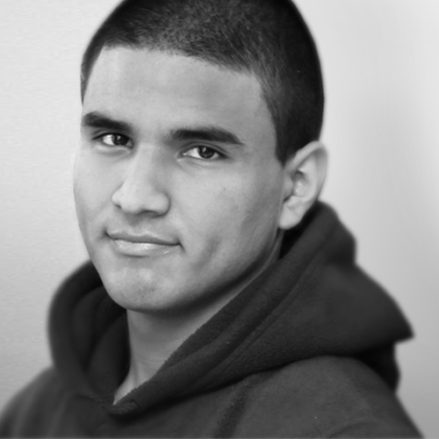What do you think it takes for someone to work in theatre?
Immediate answers that might come to mind include an interest in drama, interpersonal skills, great communication, and an interest in learning new things. Thousands of people meet these qualifications – but how often do you encounter a person with disabilities working at the theatre?
People With Disabilities Working in Theatre
One of Independent Futures’ participants, Sarah, was working with a job coach from Jewish Vocational Services when she earned an apprenticeship with Piven Theatre. After exploring what Sarah might like to do for employment, Sarah’s job coach helped her get in touch with Piven Theatre.
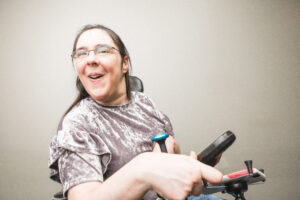 Together, the pair went over tips and what to expect in informational interviews. Sarah’s dream job was to be an assistant teacher. “The best I thought I could shoot for was taking tickets,” Sarah said. But then, her informational interview took a positive turn.
Together, the pair went over tips and what to expect in informational interviews. Sarah’s dream job was to be an assistant teacher. “The best I thought I could shoot for was taking tickets,” Sarah said. But then, her informational interview took a positive turn.
She was offered an apprenticeship where she could learn about teaching. After looking at schedules and options, Sarah accepted.
Learning New Skills & Building Dreams
Throughout her apprenticeship, Sarah worked with 4th-8th graders in Piven Theatre workshops. She got to know the students, and she was responsible for making sure they were safe.
Interacting with the students as often as she could, Sarah was able to support the students in many ways. A budding writer herself, Sarah helped one student write a poem. This was one of Sarah’s favorite parts of her apprenticeship.
“The apprenticeship was an important way for me to get out to see what I want to do in terms of a degree or job and what field I want to go into. It was a way of finding myself,” Sarah shared.
History of American Disability Employment
In 1988, the government announced October as National Disability Employment Awareness Month. During this time, government agencies will publish articles and host events to highlight the opportunity to hire individuals with disabilities. Corporations will tout statistics about how many people with disabilities they hire.
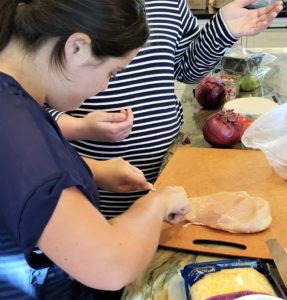 For the rest of the year, startlingly high unemployment rates for people with disabilities persists. We dream of a day when more individuals with disabilities have opportunities like this one that Sarah had, when community employers discover the gifts that individuals have to share.
For the rest of the year, startlingly high unemployment rates for people with disabilities persists. We dream of a day when more individuals with disabilities have opportunities like this one that Sarah had, when community employers discover the gifts that individuals have to share.
Before we get there, we need to understand where we have been and the milestones that advocates before us have achieved. Employers without disabilities sometimes think that there are limits to what someone with a disability can achieve, but these employers are proven wrong over and over. Over the last century, people with disabilities’ fight for employment equality has been long, hard, and limited by perception.
Beginnings of Anti-Discrimination Legislation
In the early and mid-twentieth century, only physical disabilities were eligible to receive public services and benefits for disability employment. When the Smith-Fess Act passed, the act established vocational rehabilitation for people with disabilities – but only physical disabilities.
In 1945, President Truman announced “National Employ the Physically Handicapped Week.” Later, the word “physically” was removed, making the week more inclusive in the 1960s. Eventually, this week turned into National Disability Employment Awareness Month, dedicating more time to the need for employment among the disability community.
Expansion of Civil Rights
By the ‘60s, creating inclusive spaces became increasingly important. While the courts had not caught up, President Kennedy introduced the President’s Panel on Mental Retardation. This committee explored ways that people with disabilities of all kinds could be included in every day life.
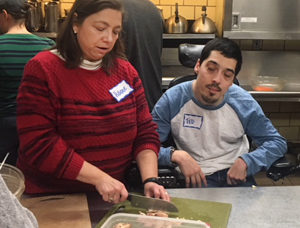 In 1972, the Independent Living Movement was born partially in response to President Nixon’s veto of the Rehabilitation Act. Later passed in 1973, the Rehabilitation Act prohibits discrimination based on someone’s disability by federal agencies and contractors. The Independent Living Movement is alive today, working to protect every individual’s right to choose where they live and how they are supported in community.
In 1972, the Independent Living Movement was born partially in response to President Nixon’s veto of the Rehabilitation Act. Later passed in 1973, the Rehabilitation Act prohibits discrimination based on someone’s disability by federal agencies and contractors. The Independent Living Movement is alive today, working to protect every individual’s right to choose where they live and how they are supported in community.
It wasn’t until 1977, when the government implemented Section 504 of the Rehabilitation Act, that people with disabilities gained civil rights. This was also when legislation acknowledged every student’s right to be in a public classroom. The precursor to supported employment, the “Try Another Way” campaign, was also born paving the path for us to where we are today.
Redefining Ability & Disability
Through the 1980s, the U.S. passed several pieces of legislation that supported individuals with disabilities’ employment prospects including the Job Training Partnership Act (1982) and the Employment Opportunities for Disabled Americans Act (1986).
The Americans with Disabilities Act was finally passed in 1990, expressly prohibiting discrimination against people with disabilities in hiring or career advancement. Since then, the perspectives of employers have been slowly evolving with the help of the federal government.
The Work Opportunity Tax Credit passed Congress in 1996, providing tax credits to businesses that hire people with disabilities. The government’s support led to an increase in community employers hiring disabled employees.
Beyond the Americans With Disabilities Act
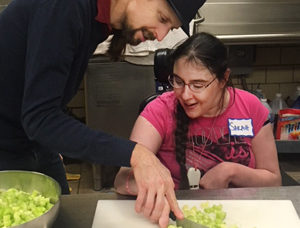 Since 1990, disability continues to be defined and redefined again. The Olmstead Act promoted community-based, independent living whenever possible. Recently, the ADA Amendments of 2008 altered the definition of “disabled” so it is easier to establish eligibility for protections.
Since 1990, disability continues to be defined and redefined again. The Olmstead Act promoted community-based, independent living whenever possible. Recently, the ADA Amendments of 2008 altered the definition of “disabled” so it is easier to establish eligibility for protections.
Since the Obama administration, the federal government’s employment agencies have supported integrated employment policies. This includes updating and improving access to services, implementing accommodations, and community outreach.
Why Should Businesses Hire People With Disabilities?
There are tons of reasons to hire individuals with disabilities, not the least of which is that they are just as capable as able-bodied employees. In fact, employees with disabilities are excellent problem solvers, stable workers (30% higher retention), safer in the workplace, and more productive.
Plus, much of the disability community is an untapped market. There are 56 million Americans with a disability of some type. The discretionary income of people with disabilities of working age alone is $21 billion. Add into this number individuals’ connections, like family and friends, and businesses realize they are missing a huge market share.
Most accommodations for employees with disabilities cost nothing. The majority of accommodations that employers pay for cost less than $500 – and this cost can be offset by the tax credit businesses receive for hiring employees with disabilities.
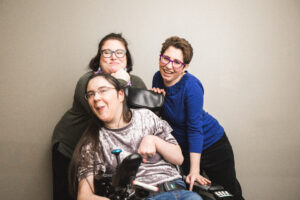 At the end of the day, there are many reasons to hire people with disabilities and very few reasons not to. Ability is not a marker of a great employee; many individuals can work successfully without accommodations while allowing a person with disabilities to grow and achieve their dream.
At the end of the day, there are many reasons to hire people with disabilities and very few reasons not to. Ability is not a marker of a great employee; many individuals can work successfully without accommodations while allowing a person with disabilities to grow and achieve their dream.
For Sarah, her apprenticeship at Piven Theatre was a big milestone. Her experience “marked the first time I had a job that wasn’t through a friend. I had to show up on time. More importantly, I had to do it for somebody else.”

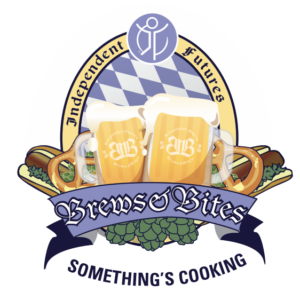 Thanks to generous donors and our wonderful community, there are many opportunities for guests at Brews & Bites to win while supporting people with disabilities in Evanston. These opportunities include 4 raffle baskets, 2 gift card trees, and a beer & wine pull.
Thanks to generous donors and our wonderful community, there are many opportunities for guests at Brews & Bites to win while supporting people with disabilities in Evanston. These opportunities include 4 raffle baskets, 2 gift card trees, and a beer & wine pull. 
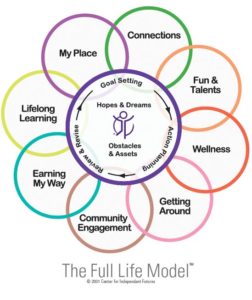 This year, the gift card tree will represent our Full Life Model. The model guides our work as tutors support participants in learning the life skills necessary to live independently. The 8 circles represent areas of a full life, which the leaves of the gift card trees will also represent.
This year, the gift card tree will represent our Full Life Model. The model guides our work as tutors support participants in learning the life skills necessary to live independently. The 8 circles represent areas of a full life, which the leaves of the gift card trees will also represent. 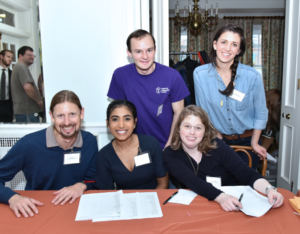 This year there are two ticket levels: regular adult tickets & young adult tickets. The difference between these two are the number of drink tickets allotted and pricing. While adult ticket purchases come with 9 drink tickets, the young adult tickets receive 3.
This year there are two ticket levels: regular adult tickets & young adult tickets. The difference between these two are the number of drink tickets allotted and pricing. While adult ticket purchases come with 9 drink tickets, the young adult tickets receive 3. 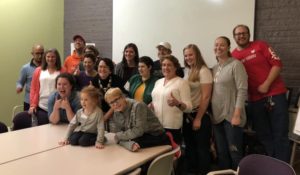 Every member of Team CIF is responsible for raising at least $1,250 as part of being on a
Every member of Team CIF is responsible for raising at least $1,250 as part of being on a 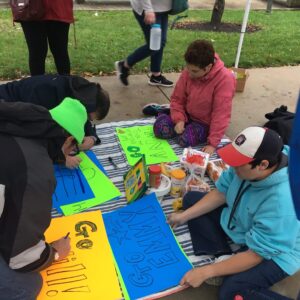 After reading about some of our amazing team members, you may find yourself thinking, “I want to get involved! But how?” Luckily, there are many ways you can support the team!
After reading about some of our amazing team members, you may find yourself thinking, “I want to get involved! But how?” Luckily, there are many ways you can support the team!  We are offering an early bird price for limited duration of 3 weeks this year. From now until October 6th, the early bird adult tickets will be $60. Adult tickets will then be $75 until the day before Brews & Bites. Day-of tickets purchased at the door will be $85.
We are offering an early bird price for limited duration of 3 weeks this year. From now until October 6th, the early bird adult tickets will be $60. Adult tickets will then be $75 until the day before Brews & Bites. Day-of tickets purchased at the door will be $85.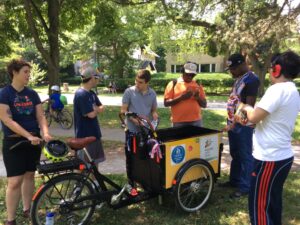 Let’s begin with an understanding of what Independent Futures considers ‘critical life skills.’ These are the skills that we need to live independently, like cooking, cleaning, and being safe.
Let’s begin with an understanding of what Independent Futures considers ‘critical life skills.’ These are the skills that we need to live independently, like cooking, cleaning, and being safe. 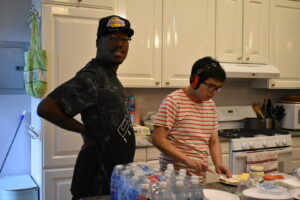 The Transition House travelers explored a lot of Evanston, including the Evanston Public Library South Branch, parks, Andy’s Custard, Dave’s Down to Earth Rock Shop, Evanston Police Department, and more.
The Transition House travelers explored a lot of Evanston, including the Evanston Public Library South Branch, parks, Andy’s Custard, Dave’s Down to Earth Rock Shop, Evanston Police Department, and more.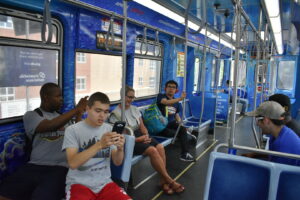 While exploring Evanston, the students were able to see what their own futures could hold. One of our community members, Lindsay, spoke with the group about what her life is like. Living independently in an apartment, Lindsay volunteers, has a job, goes out with close friends, and is engaged. Lindsay’s life is the type of full life that many of our community members have, and it’s a positive example of the life the Travel the Town students could have.
While exploring Evanston, the students were able to see what their own futures could hold. One of our community members, Lindsay, spoke with the group about what her life is like. Living independently in an apartment, Lindsay volunteers, has a job, goes out with close friends, and is engaged. Lindsay’s life is the type of full life that many of our community members have, and it’s a positive example of the life the Travel the Town students could have. The school year is almost here, and our Resource Partners at Oak Wealth Advisors, LLC, offers their advice for having school success. Take a look at our favorite tips below, and
The school year is almost here, and our Resource Partners at Oak Wealth Advisors, LLC, offers their advice for having school success. Take a look at our favorite tips below, and  To read the rest of the list and to see other resources from Oak Wealth Advisors,
To read the rest of the list and to see other resources from Oak Wealth Advisors,  IEPs, or Individualized Education Plans, are meant to be documents supporting the development of a student with disabilities. Required by law under IDEA (
IEPs, or Individualized Education Plans, are meant to be documents supporting the development of a student with disabilities. Required by law under IDEA (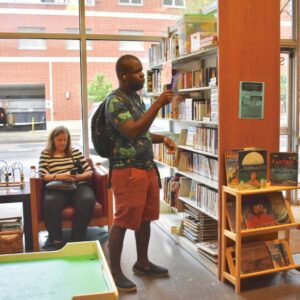 For this tip, teachers and family members can work together. Focus on the student. This may sound simple, but it is actually a much more involved process. Educators can focus on teaching students how to create their own measurable goals. Once the student understands
For this tip, teachers and family members can work together. Focus on the student. This may sound simple, but it is actually a much more involved process. Educators can focus on teaching students how to create their own measurable goals. Once the student understands 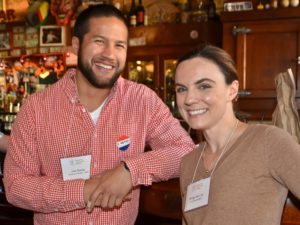 As always, all funds raised at
As always, all funds raised at  Happiness is one factor in many families’ decisions. The costs associated with care are another concern. According to
Happiness is one factor in many families’ decisions. The costs associated with care are another concern. According to 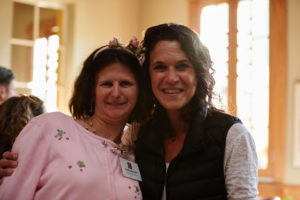 When direct service professionals focus on teaching life skills, such as cooking healthy meals and cleaning their home, an individual’s need for support in skill areas decreases. Learning life skills like these doesn’t only help individuals with disabilities maintain their spaces. It also helps them build community connections and employment skills.
When direct service professionals focus on teaching life skills, such as cooking healthy meals and cleaning their home, an individual’s need for support in skill areas decreases. Learning life skills like these doesn’t only help individuals with disabilities maintain their spaces. It also helps them build community connections and employment skills.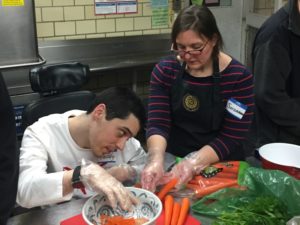 Home and community-based services funds have the potential to be used for a number of non-medical needs. Supports like employment help, remote monitoring equipment, and peer services aren’t traditionally covered. But with home and community-based services, access grows. Each of these supports can help an individual with disabilities achieve their dream of living in a community.
Home and community-based services funds have the potential to be used for a number of non-medical needs. Supports like employment help, remote monitoring equipment, and peer services aren’t traditionally covered. But with home and community-based services, access grows. Each of these supports can help an individual with disabilities achieve their dream of living in a community.






